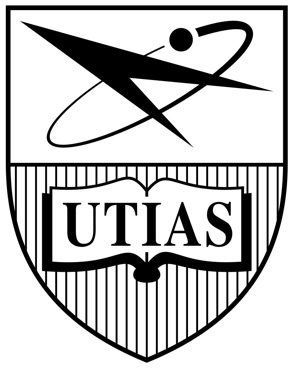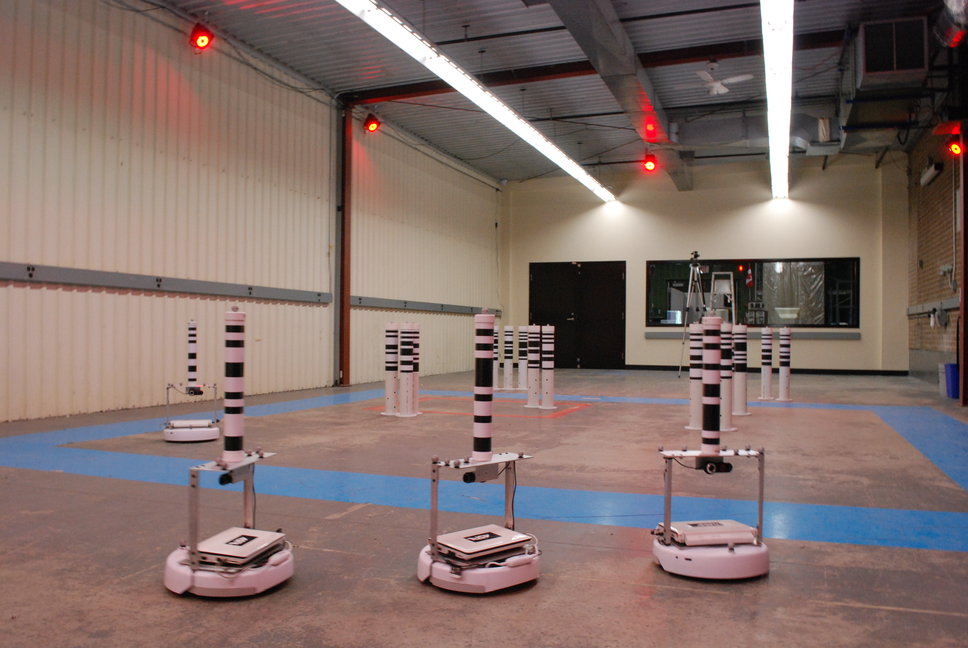

Autonomous Space Robotics Lab
Decentralized Cooperative SLAM: A Centralized-Equivalent Approach
Keith Leung, Tim Barfoot, and Hugh Liu
Overview


Communication between robots is key to performance in cooperative multi-robot systems. In practice, communication connections for information exchange between all robots are not always guaranteed, which adds difficulty to state estimation. We examined the decentralized cooperative simultaneous localization and mapping (SLAM) problem, in which each robot is required to estimate the map and all robot states under a sparsely-communicating and dynamic network. We prove how the centralized-equivalent estimate can be obtained by all robots in the network in a decentralized manner. Furthermore, a robot only needs to consider its own knowledge of the network topology in order to detect when the centralized-equivalent estimate is obtainable. Our approach is validated through more than 250 minutes of experiments using a team of real robots, with accurate groundtruth data (from our Vicon motion capture system) of all robot poses and landmark positions. Furthermore, we examined the effects of communication range limit on our algorithm's performance.
Multimedia Extension
| Extension | Type | Description | File |
|---|---|---|---|
| Video | This video is an overview of our work in decentralized cooperative SLAM. Here we briefly explain the overall problem, and demonstrate how our proposed algorithm performs. We also show some footages from one of our hardware experiments. | MP4 (64.4MB) | |
| Video | This is a graphical representation of the results of our decentralized cooperative SLAM algorithm in a simulation where the robot network is never fully connected. We compared our algorithm with the centralized estimator, which we allowed to cheat by ignoring communication constraints. | MP4 (1.2MB) | |
| Video | This video is a graphical representation of the results of our decentralized cooperative SLAM algorithm for one of our experimental trials. Again, we compared our algorithm with the centralized estimator, which we allowed to cheat by ignoring communication constraints. | MP4 (10.5MB) | |
| Video | This video is representative of how each of our experimental trials are conducted. The location of the landmarks and the starting location of the robots are changed for every trial. During an experiment, robots move to random waypoints in th workspace while avoiding collision. | MP4 (1.9MB) | |
| Video | This video shows what a robot sees with its monocular camera during a short section of an experiment. All images are corrected for distortions. The barcode patterns on other robots and landmarks are used to obtain range-bearing measurements. | MP4 (17.5MB) |
Last Updated: April 30, 2010